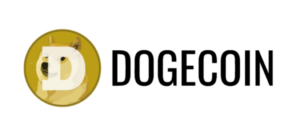In the fast-paced world of cryptocurrencies, the term ‘blockchain’ often comes up as a fundamental concept. But what does it really mean? Simply put, a blockchain is a digital ledger that records transactions across a decentralized network of computers. Let’s break this down into bite-sized pieces so you can have a better understanding of this innovative technology.
At its core, a blockchain is a chain of blocks where each block contains a list of transactions. Imagine it as a digital spreadsheet that is duplicated thousands of times across a network of computers. Each block in the chain is connected to the previous one, creating a secure and transparent record of transactions.
One of the key features of a blockchain is its decentralized nature. Unlike traditional centralized databases, where a single entity controls the data, a blockchain operates on a peer-to-peer network. This means that no single entity has control over the entire blockchain, making it more secure and resistant to fraud or hacking attempts.
Each transaction added to a blockchain is verified by network participants, known as nodes, through a process called consensus. This verification process ensures that all transactions are legitimate and that the information stored on the blockchain is accurate. Once a transaction is validated, it is added to a block and linked to the previous block in the chain, creating an immutable record of transactions.
Another important concept in blockchain technology is transparency. Since all transactions on a blockchain are recorded in a public ledger, anyone can view the transaction history. This transparency helps to build trust among users and eliminates the need for intermediaries to validate transactions.
In addition to its transparency and security features, blockchain technology also offers a high level of data integrity. Once a transaction is recorded on the blockchain, it cannot be altered or deleted, ensuring that the data remains tamper-proof and reliable.
Blockchain technology has a wide range of applications beyond cryptocurrencies. Industries such as finance, healthcare, supply chain management, and real estate are exploring ways to leverage blockchain technology to improve efficiency and transparency in their operations.
In conclusion, a blockchain is a digital ledger that records transactions in a secure, transparent, and decentralized manner. This innovative technology has the potential to revolutionize various industries by providing a secure and efficient way to record and authenticate transactions. By understanding the basics of blockchain technology, you can stay ahead of the curve and tap into the benefits it offers.

